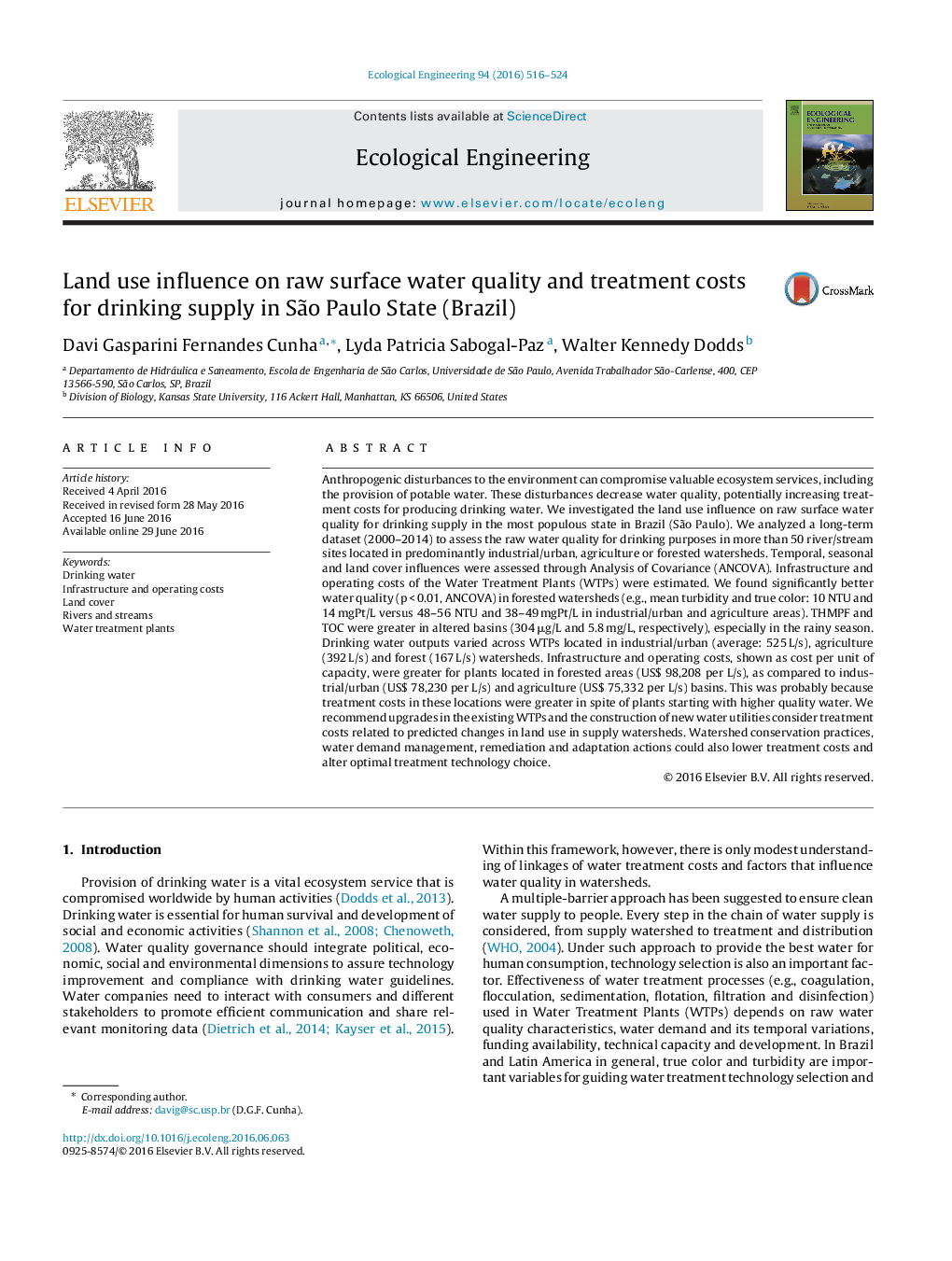| کد مقاله | کد نشریه | سال انتشار | مقاله انگلیسی | نسخه تمام متن |
|---|---|---|---|---|
| 4388578 | 1618005 | 2016 | 9 صفحه PDF | دانلود رایگان |

• Forested areas provide better raw water quality for drinking purposes.
• Trihalomethane potential formation was 24% lower in protected watersheds.
• Treatment costs were lowest in impacted basins.
• Factors other than raw water quality influenced treatment costs.
• Water utilities should consider raw water characteristics for technology selection.
Anthropogenic disturbances to the environment can compromise valuable ecosystem services, including the provision of potable water. These disturbances decrease water quality, potentially increasing treatment costs for producing drinking water. We investigated the land use influence on raw surface water quality for drinking supply in the most populous state in Brazil (São Paulo). We analyzed a long-term dataset (2000–2014) to assess the raw water quality for drinking purposes in more than 50 river/stream sites located in predominantly industrial/urban, agriculture or forested watersheds. Temporal, seasonal and land cover influences were assessed through Analysis of Covariance (ANCOVA). Infrastructure and operating costs of the Water Treatment Plants (WTPs) were estimated. We found significantly better water quality (p < 0.01, ANCOVA) in forested watersheds (e.g., mean turbidity and true color: 10 NTU and 14 mgPt/L versus 48–56 NTU and 38–49 mgPt/L in industrial/urban and agriculture areas). THMPF and TOC were greater in altered basins (304 μg/L and 5.8 mg/L, respectively), especially in the rainy season. Drinking water outputs varied across WTPs located in industrial/urban (average: 525 L/s), agriculture (392 L/s) and forest (167 L/s) watersheds. Infrastructure and operating costs, shown as cost per unit of capacity, were greater for plants located in forested areas (US$ 98,208 per L/s), as compared to industrial/urban (US$ 78,230 per L/s) and agriculture (US$ 75,332 per L/s) basins. This was probably because treatment costs in these locations were greater in spite of plants starting with higher quality water. We recommend upgrades in the existing WTPs and the construction of new water utilities consider treatment costs related to predicted changes in land use in supply watersheds. Watershed conservation practices, water demand management, remediation and adaptation actions could also lower treatment costs and alter optimal treatment technology choice.
Journal: Ecological Engineering - Volume 94, September 2016, Pages 516–524